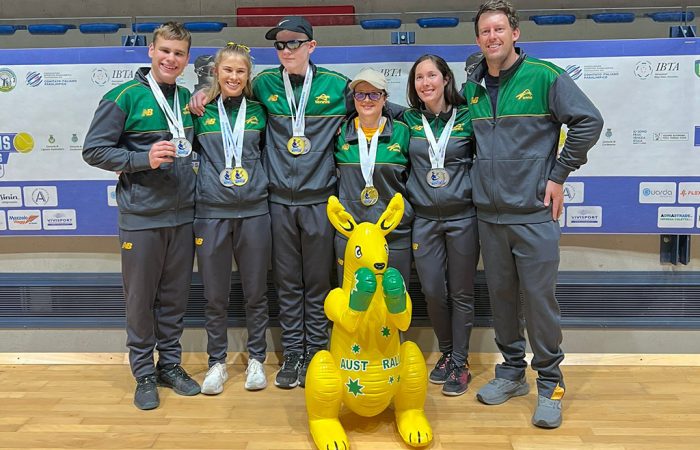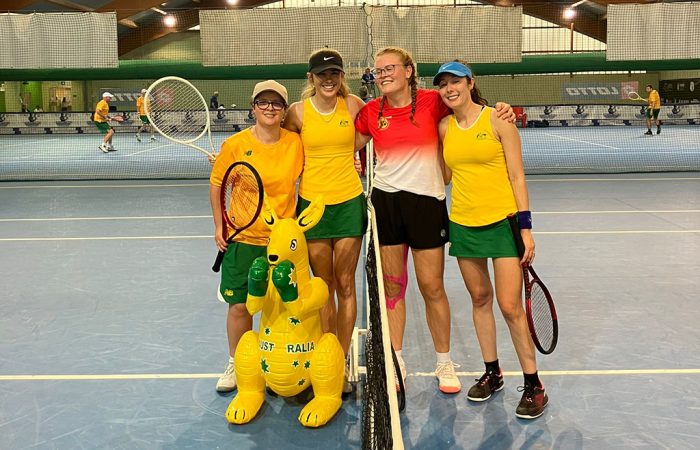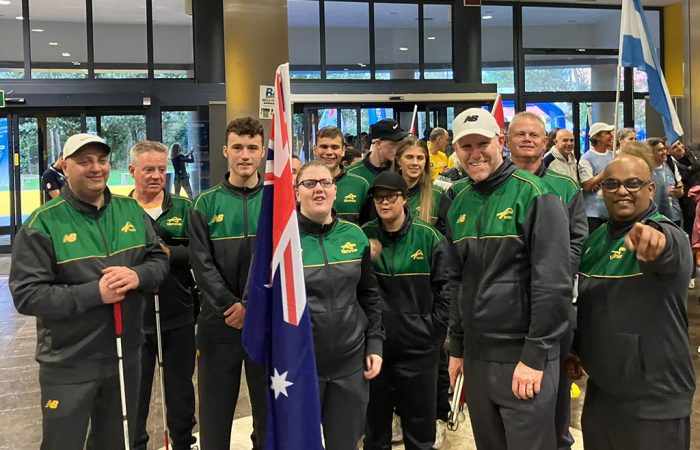Seven Aussies claim gold at IBTA Tennis World Championships
Australia has scooped 14 medals, including seven gold, at the IBTA Blind and Low Vision Tennis World Championships in Italy in a competition that drew athletes from 25 nations.
Melbourne, 9 October 2024 | Sarah Dyce

Australia has delivered a dominant performance at the 2024 IBTA Blind and Low Vision Tennis World Championships in Lignano Sabbiadoro, Italy, securing an impressive haul of seven gold, six silver and one bronze medal.
The 2024 IBTA World Championships were held across two venues in Italy, drawing athletes from around the world to compete.
A premier event in the blind tennis calendar, it continued to promote inclusivity in sport, offering opportunities for athletes with varying degrees of vision impairment to compete at the highest level.
The week-long event, held from 23-29 September, brought together more than 150 athletes from 25 countries, and the Australian contingent showcased their strength and depth across various categories.
Among the standout performers was Grace Hobbs, who took home gold in the B4 women’s singles. Representing New South Wales, Hobbs also teamed with fellow New South Wales competitor Courtney Webeck to claim another gold medal in the women’s open doubles. Webeck, competing in the B2 women’s singles, added to her haul with a silver medal.

Australia’s women competitors take the court at the 2024 IBTA Blind and Low Vision Tennis World Championships in Lignano Sabbiadoro, Italy.
In the men’s events, Ross Patterson (TAS) and Michael Leigh (NSW) proved to be an unstoppable duo, clinching the men’s open doubles gold medal. Both athletes also excelled in singles, with Patterson winning the B4 men’s singles and Leigh taking the B3 men’s singles gold.
South Australia’s Ethan Cook continued his strong run in international competition, winning gold in the B2 men’s singles. Cook also partnered with Oliver Fanshawe (QLD) to earn silver in the men’s open doubles, rounding off an incredible tournament for the pair.
Victoria’s Caroline Lane added to the medal count with a silver in the B3 women’s singles, while also partnering Germany’s Charlotte Schwagmeier to take silver in the women’s open doubles.
The format of visually impaired tennis varies based on the set sight categories that the players compete in. Depending on a player’s category they may have up to three bounces of the ball before they return it to their opponent.
In the B1 category, for those having the greatest degree of sight loss or no sight, three bounces of the ball are allowed, and players typically wear eye masks. B2, B3, B4 and B5 categories are contested by players with different degrees of partial sight, with B2 players allowed three bounces, B3 players allowed two bounces and B4 and B5 players allowed one bounce of the ball.
Australia’s success at the 2024 World Championships demonstrates the nation’s growing presence in blind and low-vision tennis, with athletes achieving podium finishes across multiple divisions.
This performance not only highlights the skill and determination of the players but also marks a significant milestone in the development of the sport in Australia.
For more information on blind and low-vision tennis in Australia, visit play.tennis.com.au.

The Australian team ahead of the opening ceremony for the 2024 IBTA Blind and Low Vision Tennis World Championships in Lignano Sabbiadoro, Italy.